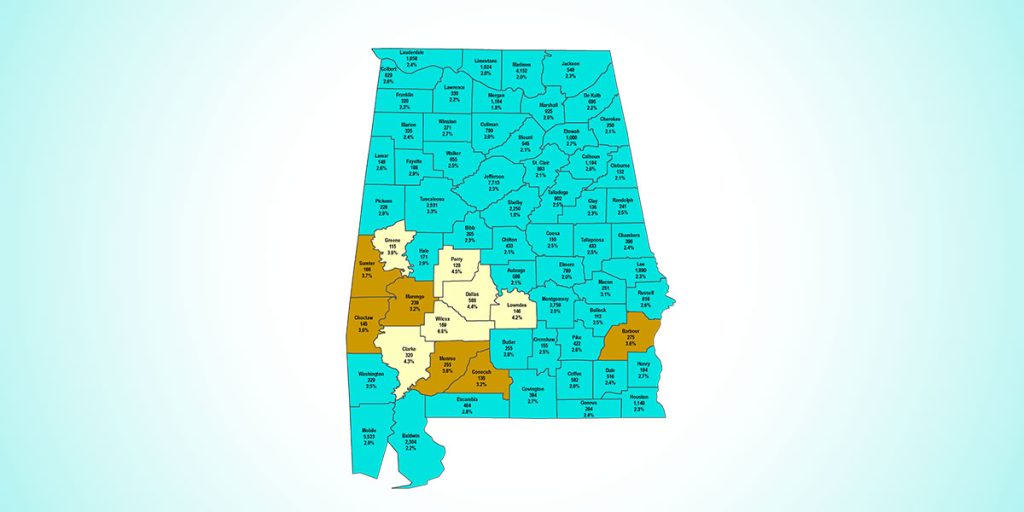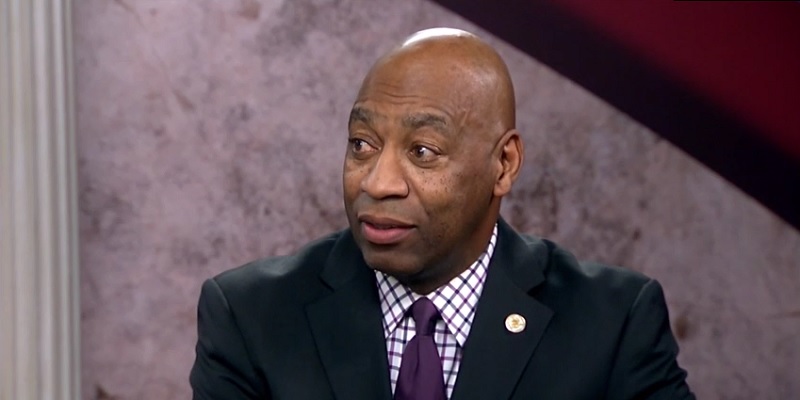Alabama Labor Secretary Fitzgerald Washington on Friday announced that Alabama achieved five economic bests in June, setting a new record low unemployment rate, high jobs count, high employment count, high labor force count and low unemployment count.
June’s preliminary, seasonally adjusted unemployment rate was 3.5%, breaking the previous record low of 3.7% from the month previous. June’s rate represents 2,160,931 employed people, another fresh record high, which was 10,456 more employed than last month’s count and 48,952 more than in June 2018.
“Another month, and yet another set of broken records,” Governor Kay Ivey said in a statement.
“It’s so exciting to be able to announce these great numbers month after month,” she continued. “It’s always positive to announce a new record low unemployment rate, but we also saw more people working than ever before, fewer unemployed than ever before, more people in the workforce than ever before, and finally, more jobs than ever before. These gains are momentous, and we certainly hope they continue as the year progresses.”
Alabama Sets NEW Record Low Unemployment Rate, NEW Record High Jobs Count, NEW Record High Employment Count, NEW Record High Labor Force Count, and NEW Record Low Unemployment Count#wehavejobs #ALjobshttps://t.co/hbxO9eb8kk@GovernorKayIvey @ALWorksSystem pic.twitter.com/YwyEQepKo1
— ADOL (@al_labor) July 19, 2019
The civilian labor force increased over the year by 39,099 to a record-high 2,240,309. The civilian labor force represents the number of people, aged 16 and over, who are either working or looking for work, excluding the military and those in institutions.
The number of people counted as unemployed dropped to a new record low of 79,378, which represents a drop of 9,853 people from June 2018.
“Let’s talk about jobs. Our economy is supporting more jobs than ever before,” Washington outlined. “There are over 37,000 more jobs in Alabama today than a year ago. Those jobs are coming with the second highest average weekly earnings in history. Workers are earning an extra $44.76 per week than they were a year ago, and $21.91 more than they were just last month. Two of our employment sectors saw their highest average weekly earnings: the trade, transportation, and utilities sector and the professional and business services sector. So not only are we gaining jobs, but Alabamians are bringing home more in their paychecks.”
Total private industry average weekly earnings measured $860.73 in June, up from $838.82 in May and $815.97 in June 2018.
Over the year, wage and salary employment increased 37,300, with gains in the professional and business services sector (+8,000), the construction sector (+7,800) and the leisure and hospitality sector (+6,800), among several others.
Wage and salary employment increased in June by 6,600. Monthly gains were seen in the leisure and hospitality sector (+1,500); the trade, transportation and utilities sector (+1,100); and the construction sector (+1,000), among others.
The trade, transportation and utilities sector and the professional and business sector’s average weekly earnings measured $702.96 and $1,087.97, respectively, which represents both sectors’ record-high earnings.
For the second consecutive month, all 67 counties saw declines in their over-the-year unemployment rates, with drops ranging from half a percentage point to more than three percentage points. Wilcox County, which traditionally has the state’s highest unemployment rate, saw its rate drop by 3.4 percentage points to 7.3%, its third-lowest rate ever.
“To put this in perspective, take a look at Wilcox County. During the recession, the county’s unemployment rate peaked at 31% in February 2010,” Washington advised. “Nearly one in three people in that county’s labor force were out of work. Now, they are at a near record low unemployment rate.”
Counties with the lowest unemployment rates in June were Shelby County at 2.5%, Marshall County at 2.8% and Baldwin County at 2.9%.
Counties with the highest unemployment rates were Wilcox County at 7.3%, Greene and Perry Counties at 6.8% and Clarke County at 6.5%.
Major cities with the lowest unemployment rates were Vestavia Hills at 2.2%, Homewood at 2.3% and Alabaster at 2.4%. Major cities with the highest unemployment rates were Selma at 7.2%, Prichard at 6.6% and Anniston at 4.9%.
Sean Ross is a staff writer for Yellowhammer News. You can follow him on Twitter @sean_yhn












